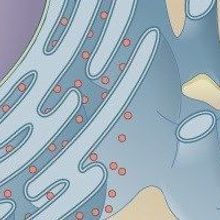Login
Subscribeendoplasmic reticulum

Infographic: Intracellular Bacteria’s Tricks for Host Manipulation
Catherine Offord | Dec 1, 2022 | 2 min read
Various microbes, including several human pathogens, hijack the cell’s skeleton, membranes, and protein-making machinery to make themselves at home.

New Gene Mutants Identified in Rare Motor Neuron Diseases
Clare Watson | Oct 17, 2022 | 2 min read
The discovery of gene variants in cases of hereditary spastic dysplasia could provide a diagnosis to affected families where no genetic cause could be found before.

Scientists Uncover Major Pathway Cells Use to Mend Leaky Lysosomes
Holly Barker, PhD | Oct 6, 2022 | 3 min read
Damaged lysosomes are repaired by a lipid-based signaling pathway dubbed PITT that could be targeted to treat neurodegenerative disease, its discoverers say.

New Screening Approach Reveals Novel Regulators of Microcephaly
Catherine Offord | Jan 1, 2021 | 2 min read
Researchers combine organoids, CRISPR-Cas9, and cellular barcoding technologies to identify genes that influence brain size.

Structural Details of Endoplasmic Reticulum Revealed
Jef Akst | Oct 28, 2016 | 1 min read
The ribosome-associated organelle consists of tightly packed tubes, not flat sheets as previously believed, according to new super-resolution microscopy images.

Gia Voeltz: Cellular Cartographer
Karen Zusi | Dec 1, 2015 | 3 min read
Associate Professor, Department of Molecular, Cellular, and Developmental Biology, University of Colorado, Boulder. Age: 43

Targeted ER Breakdown
Ashley P. Taylor | Jun 16, 2015 | 3 min read
Researchers identify receptors that target the endoplasmic reticulum for degradation by autophagy in yeast and mice.

Palade Particles, 1955
Kerry Grens | Feb 1, 2014 | 2 min read
Electron microscopy led to the first identification of what would later be known as ribosomes.

Palade and His Particles
Kerry Grens | Jan 31, 2014 | 1 min read
Nobel Laureate Christian de Duve discusses the impact of George Palade’s work on ribosomes.

Organelle Architecture
Mary Beth Aberlin | Dec 1, 2013 | 3 min read
There’s beauty in a cell’s marriage of structure and function.

Intracellular Spirals
Kate Yandell | Dec 1, 2013 | 2 min read
Membrane twists connect stacked endoplasmic reticulum sheets.

Bile Compound Prevents Diabetes in Mice
Kerry Grens | Nov 14, 2013 | 2 min read
A chemical prevalent in the bear gallbladder abates a cellular stress response and stalls the progression of type 1 diabetes in rodents.
The Subcellular World Revealed, 1945
Cristina Luiggi | Mar 1, 2012 | 2 min read
The first electron microscope to peer into an intact cell ushers in the new field of cell biology.
Give Me a Hug
Tia Ghose | Feb 1, 2012 | 2 min read
Editor's choice in cell biology
The Enigmatic Membrane
Muriel Mari, Sharon A. Tooze, and Fulvio Reggiori | Feb 1, 2012 | 10+ min read
Despite years of research, the longstanding mystery of where the autophagosome gets its double lipid bilayers is not much clearer.
Traffic Cops
Jessica P. Johnson | Oct 1, 2011 | 2 min read
Editor's Choice in Cell Biology
